Charts of the Week
Charts of the week from 27 to 31 March 2023: consumer prices, natural gas consumption, turnover in trade, turnover in market services and bonds.
In March, consumer prices remained unchanged from the previous month, while year-on-year growth increased as expected and amounted to 10.5%. Much of the year-on-year increase was due to the low base from last year when the government significantly reduced electricity prices by abolishing certain levies and charges. Prices of food and non-alcoholic beverages, which rose by 19% year-on-year in March, continue to contribute significantly to inflation. After declining in previous months, real turnover in most market services rose significantly in January, as it did in most trade segments, where it declined again in February. In the last eight months, the decline in gas consumption in Slovenia compared to the same periods of the previous five years was slightly below the EU recommendation to reduce gas consumption by at least 15%, whereas the EU reduced gas consumption by a fifth between August last year and January this year. After a sharp rise in 2022, yields to maturity of euro area government bonds continued to rise slightly in the first quarter of this year.
Consumer prices, March 2023
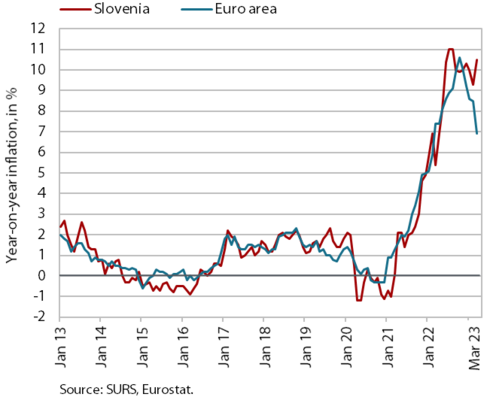
In March, consumer prices remained unchanged from the previous month, while year-on-year growth increased as expected and amounted to 10.5%. Much of the year-on-year increase was due to the lower base from last year when the government significantly reduced electricity prices by abolishing certain levies and charges. Consequently, prices increased by almost 50% year-on-year in March this year. Prices of food and non-alcoholic beverages, which rose by 19% year-on-year in March, continue to contribute significantly to inflation. Growth of semi-durable goods prices rose to around 6%, with a slightly more pronounced seasonal increase in the prices of clothing and footwear. Amid a monthly decline in furniture prices, year-on-year price growth for durable goods fell sharply to 5.9%, the lowest level since November 2021. Price growth in services also slowed slightly year-on-year (to 6.8%), which we estimate to be mainly due to a somewhat more pronounced seasonal drop in prices of package holidays.
Natural gas consumption, March 2023
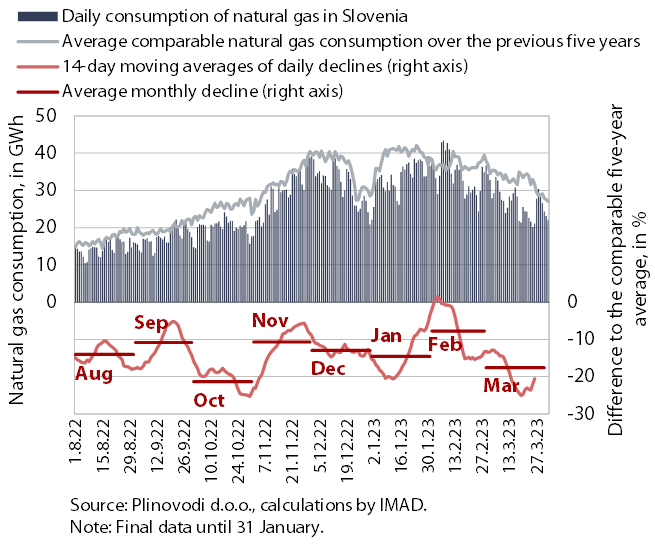
Gas consumption in March and in the period between August last year and March this year was 18% and 14% lower, respectively, than the average consumption in the same periods during the five preceding years. Lower gas consumption was due to lower production in some industries as a result of high gas prices and government measures to encourage more rational consumption, while mild weather also widened the gap with average gas consumption in March compared to February. In the last eight months, the decline in gas consumption in Slovenia compared to the same periods during the five preceding years was slightly below the EU recommendation to reduce gas consumption by at least 15%, whereas the EU reduced gas consumption by a fifth between August last year and January this year.
Turnover in trade, January–February 2023
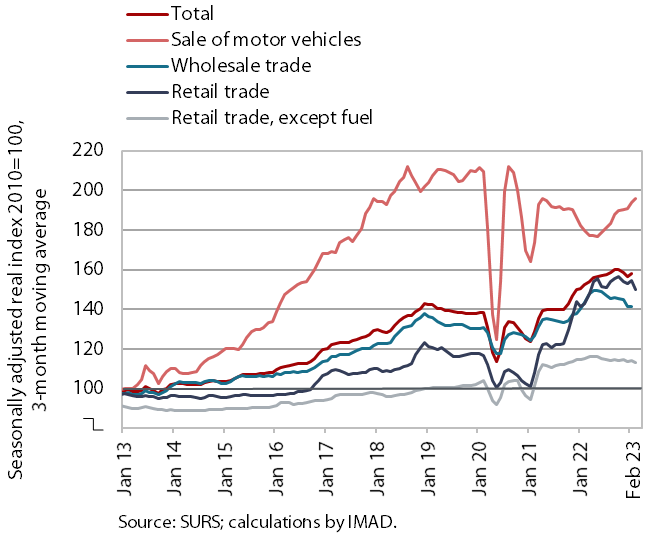
After a temporary increase in January, real turnover fell in most trade sectors in February. After a sharp decline in the last quarter of last year, turnover in wholesale trade rose in January, to a level similar to that in January last year, and it also increased in the retail sale of food, beverages and tobacco, which remained significantly lower year-on-year (by 5.1% in real terms). In January, growth continued in the sale of motor vehicles, where turnover increased significantly year-on-year (14.5% in real terms) due to the low base. After stagnating in the second half of last year, turnover in retail sale of non-food products decreased in January. Preliminary SURS data for February point to lower turnover in all sectors for which data are available.
Turnover in market services, January 2023
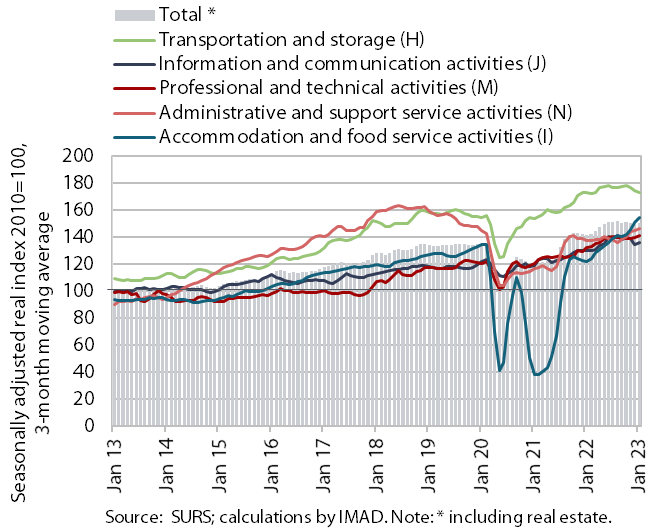
After a decline, real turnover increased significantly in most market services in January. Total turnover in market services declined in the final months of 2022, but it rose in current terms at the start of this year, by 1.8%. High growth continued in the accommodation and food service activities and in professional and technical activities. After a two-month decline, turnover in information and communication activities also recovered, this time driven by significant growth in the sale of computer services in both the domestic and foreign markets. Turnover in transportation and storage declined again, especially in land transport. Turnover in the administrative and support service activities remained high at the level of the end of 2022. In January, total turnover was 7% higher year-on-year in real terms. It was higher year-on-year in all market services and fell short of pre-epidemic levels (compared to January 2019) only in administrative and support service activities (the most in employment agencies, by 28%).
Bond, Q1 2023
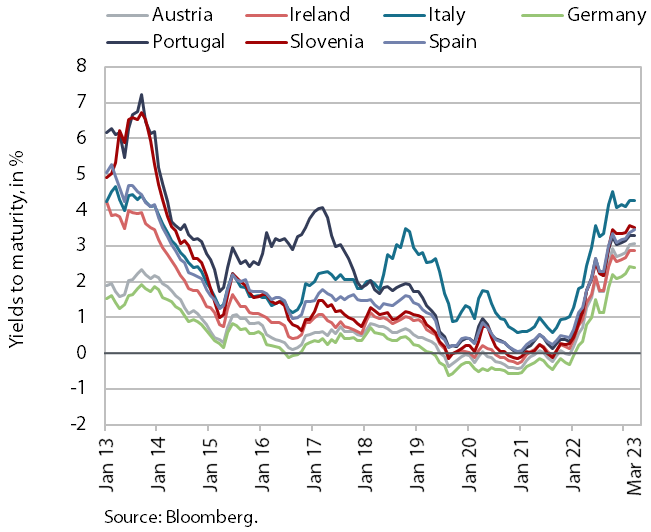
After rising sharply in 2022, yields to maturity of euro area government bonds continued to rise slightly in the first quarter of this year. The yield to maturity of the Slovenian government bond was thus 3.48% in the first quarter of 2023, which is the highest since 2014. The spread to the German bond fell by about 10 bps (to 114 bps) compared to the last quarter of 2022.
